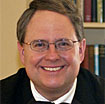Commentary on 1 John 3:1-3
The “lectionary gnomes” have done the preacher no favor in isolating this passage from its preceding verses.
First John 2:28-29 encourages Christians to “abide,” or persist with endurance, in that domain defined once for all by Christ (2:6, 10, 14, 24) so that when he (alternatively, God) is revealed at his royal coming (parousia) the church may stand before him unashamed, with bold confidence (parrēsian).
This urging drives home with concentrated force to the church the already/not yet tension that typifies New Testament eschatology overall, paving the way for a reserved assurance in 3:2a: “Beloved, we are God’s children now; what we will be has not yet been revealed.”
The author’s caution probably springs from his christology, ecclesiology, and pastoral sensitivity. It is impossible to claim with certainty, when history’s final curtain is rung down, how Christians shall appear: they are but images of Christ, who himself must first be revealed. “When he is revealed [by God], we will be like him, for we will see him as he is” (3:2b).
In practical terms 1 John addresses a congregation seared by schism, riven by those who have gone beyond the confession that “Jesus Christ has come in the flesh” (4:2-3) and have bolted the church for an unbelieving world (2:18-23; 3:1c; 4:5-6). Within that context 1 John’s author reins in a dangerous progressivism that moves too far ahead of the apocalyptic curve. Yet he dare not generate hopeless agnosticism of the church’s future; and so he insists that the Father of Jesus Christ now authorizes our being “called children of God; and so we are” (3:1 [RSV]; see also 3:9-10; 4:7; 5:1-2, 4, 18).
Such language of kinship accents the affinity of believers with God and with Christ. First John 2:28–3:3 highlights two family traits among God’s children. First: “If you know that he is righteous, you may be sure that everyone who does right has been born of him” (2:29, my emphasis). In Christ, God’s new age is rectifying everything that has been thrown out of joint (see also Matthew 13:43, 49; 25:46; Romans 5:21); thus it follows that Christians aligned with that movement are putting things to rights in accordance with the norm of God’s own justice.
Second: “All who have this hope in him purify themselves, just as he is pure” (1 John 3:3) “Purity” (hagnos) could be translated “moral sincerity” or “unimpeachable rectitude” (see also Philippians 1:17; 1 Timothy 5:22; James 4:8; 1 Peter 1:22). To sum up the sense of 1 John 3:1-3: God’s future — for both Christ and Christians — flows from faithful integrity in the present.
Precisely how children will mature is impossible to predict; we do know that children resemble their parents and tend to grow even more so. Like mother, like daughter. Like father, like son. Like God, like Christ (4:9-10) and Christians (3:7b-10).
In characteristically Johannine fashion, that last observation leads us back to this lection’s beginning (3:1): “See what love the Father has given us.” Neither here nor anywhere in 1 John is our integrity or purity a precondition for being God’s children. Quite the contrary: “Little children, you are from God“; “God sent his only Son into the world so that we might live though him“; “we love because he first loved us” (4:4a, 9b, 19b, emphases added).
Christians are in no way self-made creatures for the irrefutable reason that children do not beget themselves. The vocation of believers in 1 John is to respond to God’s prior action for them. The child of God is a responsible agent and is responseable — enabled to respond — by the endowment of God’s prevenient love. In Bargainers and Beggars (1919) James Huntington, Episcopal priest and monastic, hit the nail on the head: “In [God] alone do we find the full realization of bestowal, of donation. For only his own love prompts him to give existence to his creatures, and to continue to endow them with what they have, or are, or ever can become.”
In such light as this we may reclaim observance of All Saints Day. The term “saint” has become nearly incomprehensible in Protestant Christianity; if anything, secularism has made even greater hash of it. Nowhere in 1 John — nowhere in the Bible, for that matter — does “saint” refer to a person of conspicuous virtue. Paul addresses the church in Corinth as “called saints [klētois hagiois] … sanctified in Christ” (1:2), but 1 Corinthians offers abundant testimony that its recipients are not poster children for moral excellence.
In Roman Catholicism a saint is one granted the beatific vision in heaven. That chimes with the honor of faithful Christian martyrs in Revelation (4:8-10; 13:10; 14:12), though Catholic doctrine has interpreted Scripture in a distinctive way. A Presbyterian layman once expressed to me grave discomfort with my reference to “saints” on the grounds that the Reformation had rendered the term defunct. What, I asked him, did he mean when he recited the Creed’s belief in “the communion of saints”? He didn’t know.
First John can help. In this letter “sanctity” does not refer to impossible, static goodness now or a vision relegated to the coming age. To abide in Christ is to be fully anointed by his truthful teaching (2:27). To be a child of God is a divine vocation, articulating the depth of God’s love for us (3:1a).
The church’s integrity wells up from, and is channeled by, God’s calling (3:1b; 3:3). To be a saint is to live in the same love by which God has loved us (3:16-18; 4:7-12). On the Sunday of All Saints we give thanks to God for those who have abided in divine love, who have educated us in love “because he first loved us” (4:19). We rededicate ourselves to that company of saints, called to “walk in the light as he himself is in the light [and to] have fellowship with one another” (1:7).

November 6, 2011